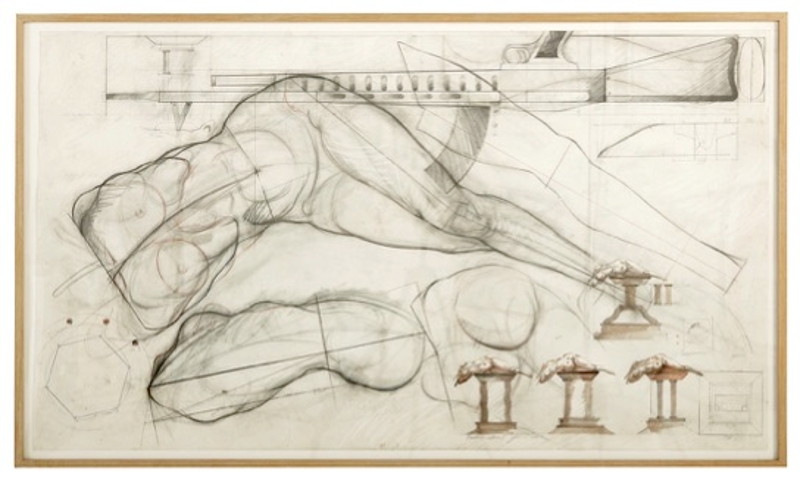Public Art on Campus - James Drake
ART ON CAMPUS
Praetorian Guard
Year: 1985
Medium: Conte Crayon, Pencil, Charcoal and Watercolor on Paper
Location: Theatre Arts 2nd Floor
Gift of Rob Clark and Jerry Thacker
Praetorian Guard is reminiscent of a sketch or study an artist might make before moving on to a more detailed drawing or painting. In Drake’s case, this drawing is intended to stand alone as a finished product. The title refers to an elite unit of the Imperial Roman army who served as bodyguards and intelligence gatherers for Roman emperors and other high-ranking officials beginning in 275 BC. In later times, they grew in political influence and assisted with overthrowing and assassinating emperors. The guard was disbanded by Constantine the Great in 312.
The inverted gun at the top of the drawing and the disjointed body parts are allusions to the violence referenced in the title, yet the graceful, curving shapes create an overall visually captivating work of art. The columns upon which several figures are draped appear to be inspired by the Roman numeral II, perhaps a nod to Drake’s interest in numbers.




